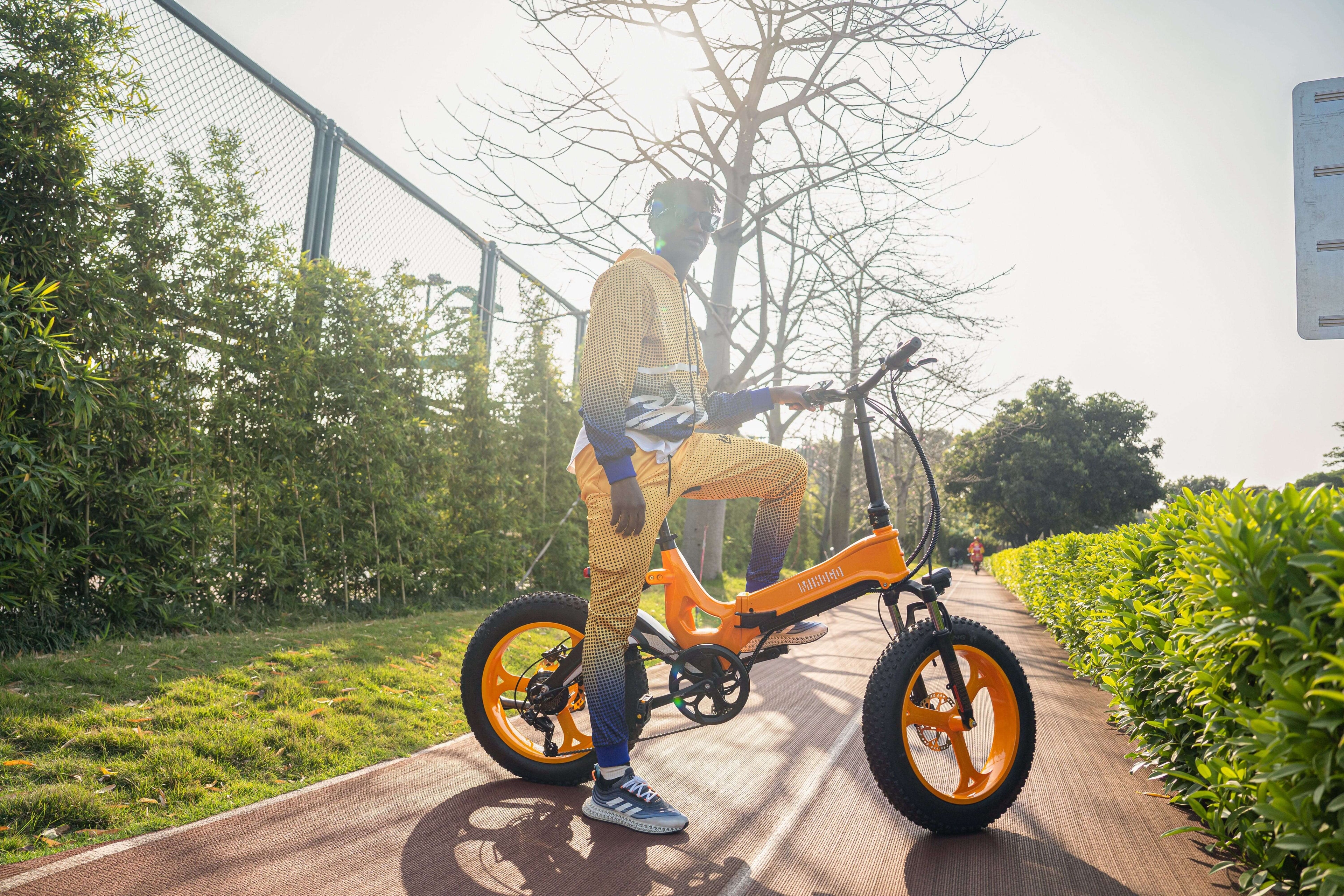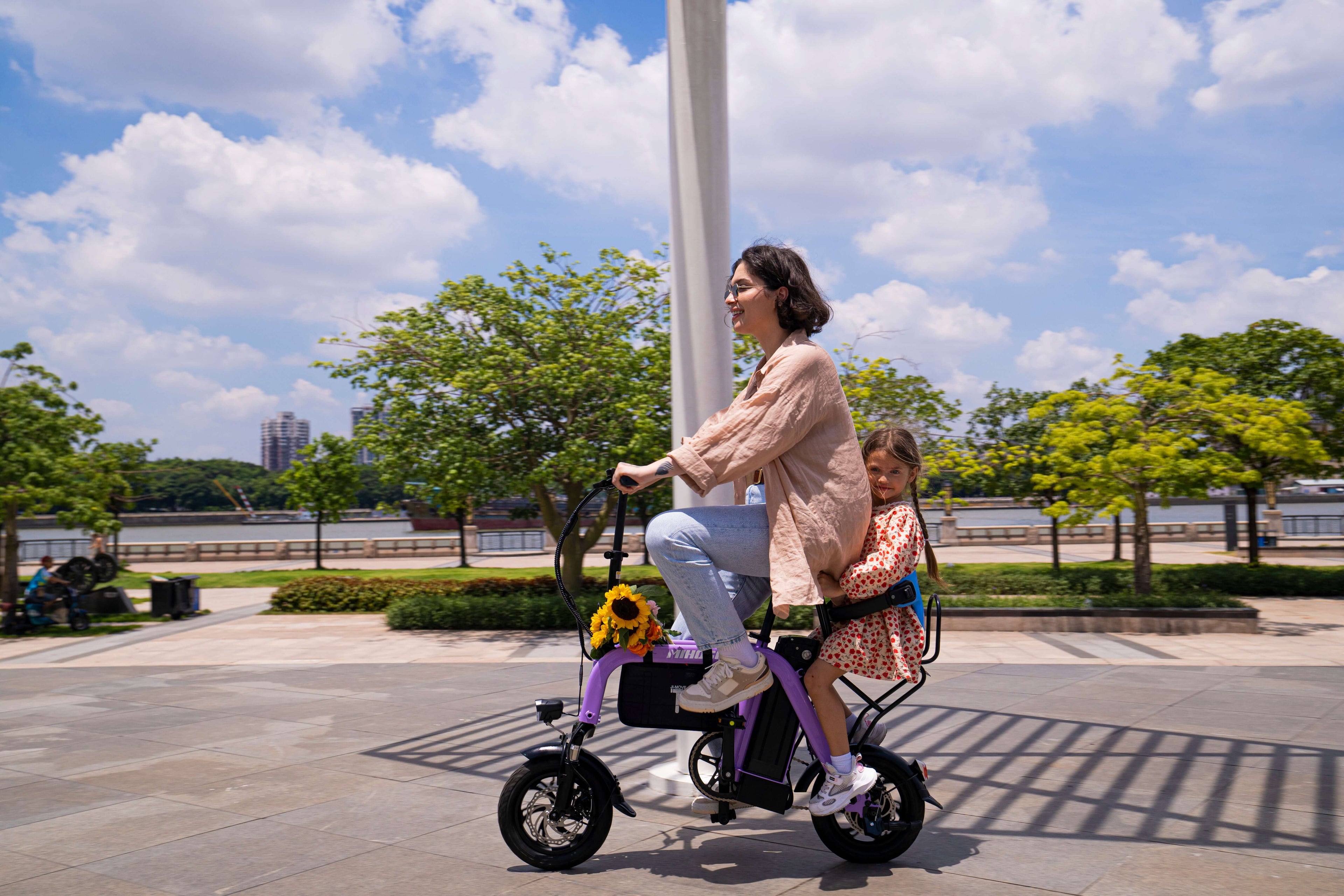Understanding Summer Heat Impact on E-Bikes
E-bike batteries are made of lithium-ion cells, which are sensitive to extreme temperatures. Hot weather can cause several problems, including reduced battery capacity, decreased range, and potential permanent damage. The ideal storage temperature for e-bike batteries is between 10 and 20 degrees Celsius, making summer heat management crucial for your Mihogo e-bike's health.
Why Summer Battery Care Matters
Summer heat accelerates chemical reactions inside lithium-ion batteries, leading to faster degradation, reduced capacity, and shorter lifespan. Prolonged exposure to temperatures above 95°F (35°C) can damage battery cells and decrease charging efficiency. Understanding these risks is the first step to protecting your investment.
Essential Summer Battery Management Strategies
Optimal Storage Temperature Guidelines
The best ebike battery storage temperature is between 50°F and 77°F (10°C to 25°C). Following this simple rule will help your battery last for many years and work at its best. For your Mihogo e-bike, maintaining this temperature range is critical during summer months.
Storage Best Practices:
- Store your Mihogo indoors whenever possible
- When not in use, always store your e-bike battery in a cool, dry place with moderate temperatures. Ideally, this should be between 50°F and 77°F
- Remove the battery from your bike if storing in a garage or shed
- Don't expose it to the sun for more than an hour. Even though we always advise storing your bike indoors, if it is not possible, remove the battery and keep it out of the sun
Smart Charging Techniques for Hot Weather
As a long ride on a hot day makes your ebike battery warmer, it's best to let it cool down to room temperature before using the charger. Charging a hot battery can further increase the internal temperature and stress the battery cells.
Summer Charging Protocol:
- Allow battery to cool to room temperature before charging
- Whenever possible, charge your electric bike battery in a cool, air-conditioned room
- Avoid charging during peak heat hours (noon to 4 PM)
- If time allows, opt for the slower charging option. While faster charging is convenient, slower charging can generate less heat and put less stress on the battery
Mihogo Model-Specific Summer Care Recommendations
Mihogo Air750 Max - Premium Heat Management
- Specifications: Carbon fiber frame, 750W motor, 121-mile range
- Summer Advantages: Carbon fiber frame dissipates heat better than aluminum
- Heat Management: Lightweight design reduces motor strain in hot weather
- Best For: Long-distance summer touring and performance riding
Mihogo ONE Utility EBIKE - Heavy-Duty Summer Workhorse
- Specifications: 750W motor, 167-mile range, utility design
- Summer Applications: Ideal for cargo hauling and extended summer commutes
- Heat Considerations: Higher capacity battery requires extra cooling attention
- Best For: Daily commuting and utility tasks in hot weather
MIHOGO RX 2.4 - Versatile Summer Commuter
- Specifications: 500W motor, 40-mile range, folding design
- Summer Benefits: Compact folding design allows easy indoor storage
- Heat Management: Moderate power output generates less heat
- Best For: Urban commuting and mixed-terrain summer rides
Mihogo Mini - Compact Heat-Efficient Design
- Specifications: 350W motor, 62-mile range, lightweight
- Summer Advantages: Lower power motor runs cooler
- Heat Management: Compact size allows for better airfl
Advanced Summer Riding Techniques
Timing Your Summer Rides
Lithium-ion e-bike batteries, the most common type in ebikes, perform best in moderate temperatures, typically between 60°F and 80°F. Plan your Mihogo rides strategically:
Optimal Riding Schedule:
- Early morning rides (6-9 AM) for cooler temperatures
- Evening rides (6-8 PM) after peak heat
- The hottest part of the day is typically between noon and 4 p.m. Ride in the early morning or late evening when the air is cooler
Heat-Conscious Riding Techniques
Power Management:
- Using the maximum power assist mode creates more work for the motor and battery, leading to increased heat generation. On flat terrain or gentle inclines, opt for lower assist levels
- Use eco-mode during hot weather to reduce heat buildup
- Pedal more to reduce motor load and heat generation
Strategic Break Planning:
- More frequent breaks are essential for both you and your electric bike in hot weather. Find a shady spot to rest, take a refreshing drink, and allow your battery to cool down
- Plan routes with shade and cooling stops
- Monitor battery temperature during long rides
Summer Maintenance Excellence
Pre-Ride Inspection Protocol
Before each summer ride with your Mihogo, conduct these essential checks:
Battery Health Assessment:
- Check battery housing for signs of overheating
- Ensure battery is securely mounted
- Monitor charge level and charging behavior
- Regularly inspect your ebike battery for any signs of damage, such as corrosion on the terminals, cracks in the casing, or leaks
Cooling System Check:
- Ensure motor ventilation is clear
- Check for debris blocking airflow
- Inspect battery mounting area for heat buildup
Post-Ride Care Routine
Immediate Post-Ride Actions:
- Whenever possible, park your e-bike in a cool, shaded area. This will help to regulate the battery temperature and prevent unnecessary heat buildup within the motor and electrical components
- Remove battery if storing outdoors
- Allow components to cool before cleaning
- After riding in salty or dusty conditions, wipe down your battery with a damp cloth (not soaked) and fresh water to remove any salt or debris
Summer Storage Solutions
Indoor Storage Optimization
Climate Control:
- Maintain consistent temperature between 50-77°F
- Ensure adequate ventilation
- Avoid direct sunlight through windows
- Use dehumidifiers in humid climates
Garage and Shed Considerations:
- Your garage, shed, or car trunk might seem like convenient storage options, but during the summer, these spaces can become scorching hot
- Install ventilation fans for better airflow
- Use insulation to moderate temperature swings
- Consider portable air conditioning units for extreme climates
Travel and Transportation
Car Transportation Safety:
- A study says that within one hour, your car's interior temperature can skyrocket to nearly 120°F, and dark surfaces in the motor vehicle can sizzle up to a scorching 200°F
- Always remove battery when transporting in vehicles
- Use air conditioning during transport
- Never leave e-bike in closed vehicles
Troubleshooting Summer Heat Issues
Recognizing Overheating Symptoms
Battery Warning Signs:
- Reduced range or capacity
- Slower charging speeds
- Battery feeling unusually hot to touch
- Error messages on display
Motor Heat Indicators:
- Reduced power output
- Unusual noise or vibration
- Motor cutting out during rides
- Excessive heat from motor housing
Emergency Cooling Procedures
If Your Mihogo Overheats:
- Stop riding immediately and find shade
- Turn off the system and allow natural cooling
- Never use water or artificial cooling methods
- Wait for normal operating temperature before resuming
- Check for damage before continuing
Summer Accessories and Upgrades
Heat Protection Accessories
Essential Summer Gear:
- Battery insulation covers for extreme heat
- Handlebar grips with heat-resistant materials
- Reflective frame tape to reduce heat absorption
- Ventilated phone mounts for electronics
Cooling Enhancement Modifications
Airflow Improvements:
- For optimal performance, consider alternative mounting options that allow for better air circulation around the battery, such as a bottle cage adapter or a rack-mounted battery case
- Frame ventilation modifications
- Heat-dissipating battery mounts
- Cooling fans for extreme conditions
Environmental Considerations
Sustainable Summer Riding
Summer e-biking with your Mihogo contributes to reduced air conditioning use in cars and decreased urban heat island effects. By following proper heat management practices, you're not only protecting your investment but also maintaining an eco-friendly transportation solution throughout the hottest months.
Route Planning for Heat Management
Heat-Conscious Route Selection:
- Choose shaded bike paths through parks
- Avoid concrete surfaces that absorb heat
- Plan stops near air-conditioned buildings
- Consider elevation changes that provide natural cooling
Long-Term Battery Health
Seasonal Battery Maintenance
Summer Battery Care Schedule:
- Monthly capacity checks during peak heat
- For daily use, the charge level doesn't matter much. For long-term storage over a few weeks, keep the charge between 40% and 60%
- Regular cleaning of battery contacts
- Professional inspection for high-use scenarios
Heat Damage Prevention
Protective Measures:
- Use battery thermal management systems
- Implement smart charging schedules
- Monitor ambient temperature during rides
- Consider battery rotation for heavy users
Emergency Summer Preparedness
Heat Emergency Kit
Essential Items:
- Portable shade for emergency stops
- Extra water for cooling and hydration
- Digital thermometer for temperature monitoring
- Emergency contact information for bike shops
Extreme Heat Protocols
When to Avoid Riding:
- Temperatures above 100°F (38°C)
- Heat advisory warnings
- High humidity conditions
- During peak UV hours
Conclusion: Master Summer E-Biking
Summer e-bike care with your Mihogo electric bike requires attention to heat management, strategic riding, and proactive maintenance. By following these comprehensive guidelines, you'll protect your investment while enjoying optimal performance throughout the hottest months.
Remember that proper summer care extends beyond just the battery – your entire Mihogo e-bike benefits from heat-conscious riding practices. Whether you're commuting on the utility-focused Mihogo ONE, touring with the carbon Air750 Max, or enjoying recreational rides on the compact Mini, these heat management strategies will keep you riding safely and efficiently all summer long.
Stay cool, ride smart, and make this summer your best e-biking season yet with proper care and maintenance of your Mihogo electric bike.
External References:
- Heat Safety Guidelines - CDC Heat Safety Resources
- Lithium Battery Safety - NHTSA Battery Safety Information
- Electric Vehicle Thermal Management - Wikipedia Thermal Management Overview








